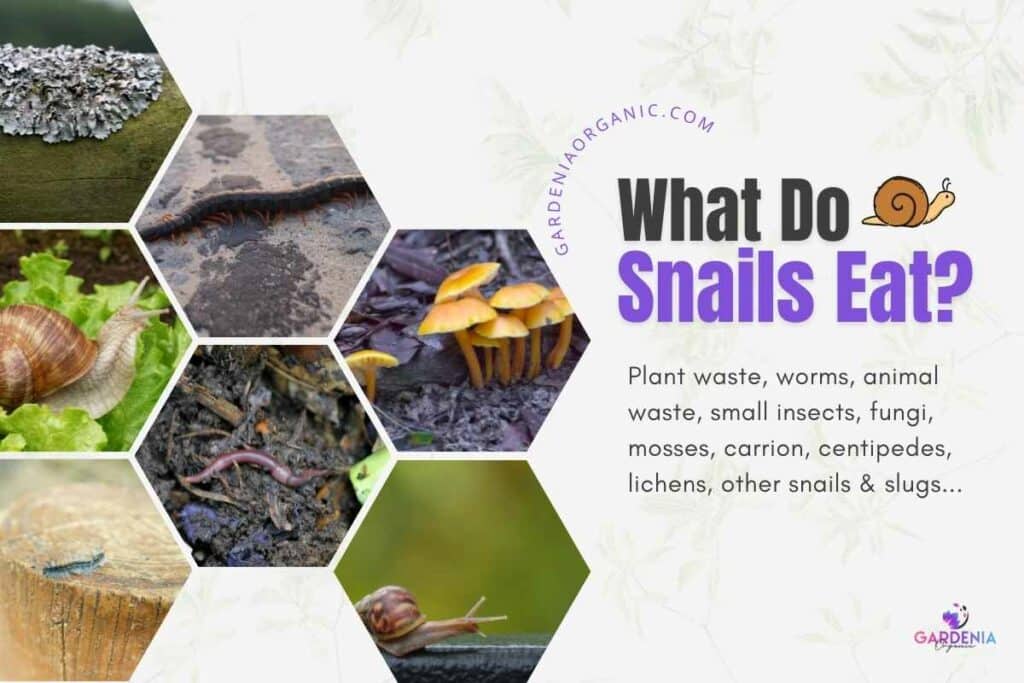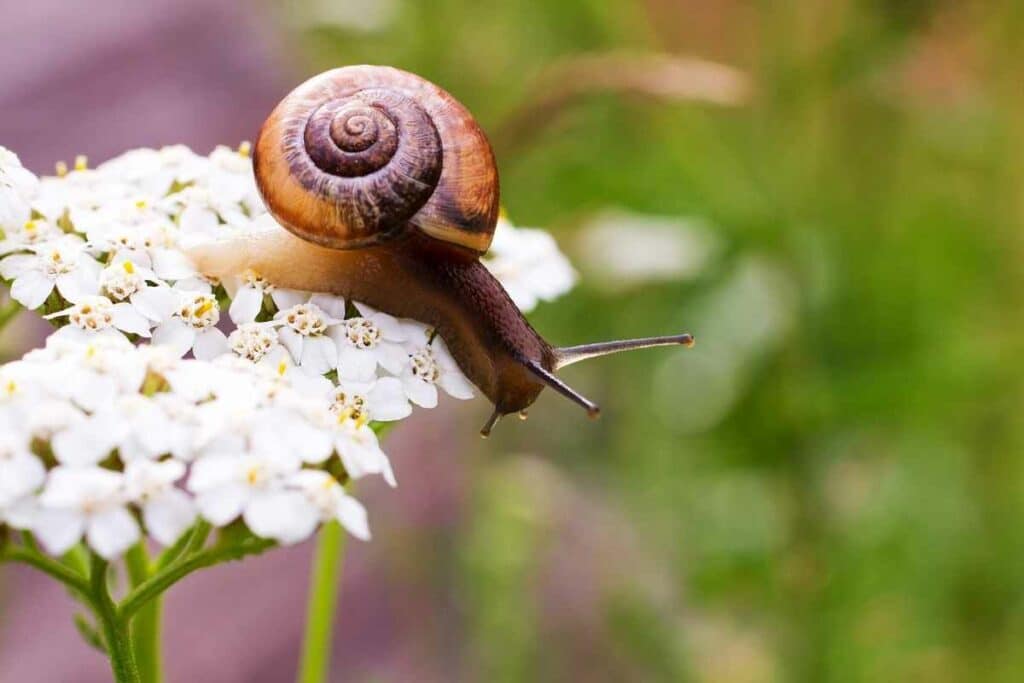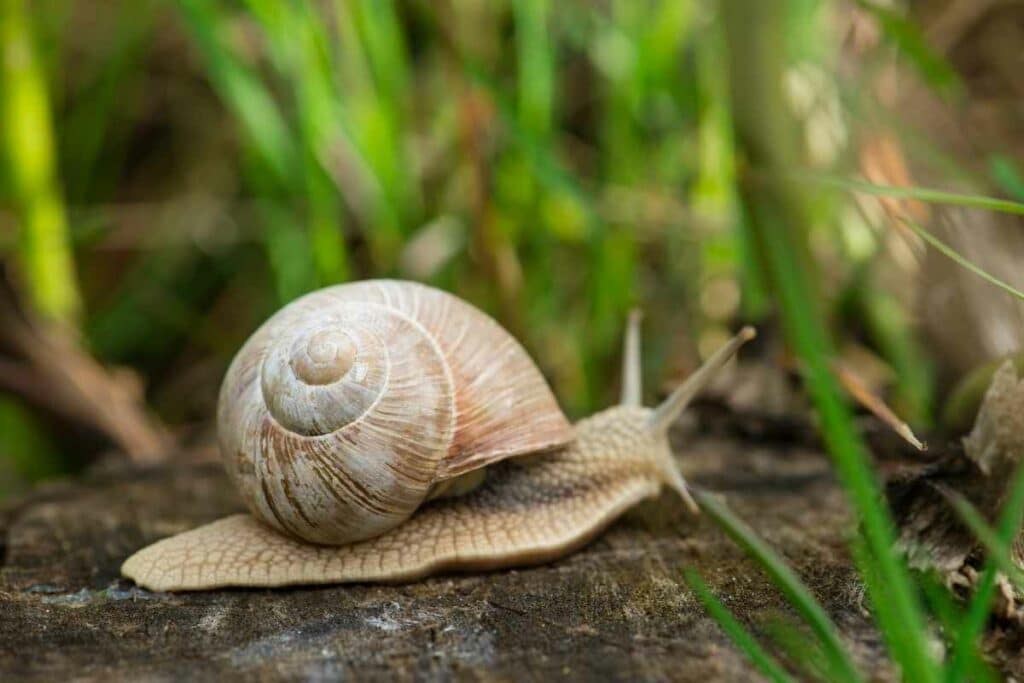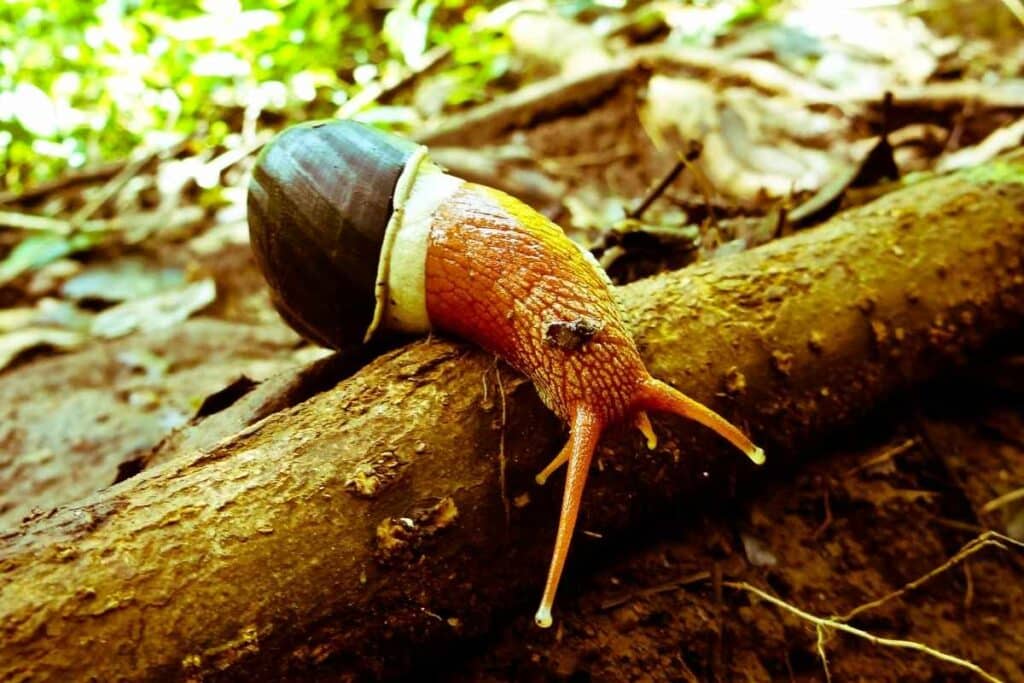If you are wondering “what do snails eat?”, the quick answer is everything. Really, snails are surprisingly omnivorous creatures tucking into anything from rotting excrement and worms, to your prize radishes!
It is the sheer variety of foods on a snails menu that can easily tip the balance towards them becoming a pest in your garden.
In addition, when you take a closer look at snail anatomy you will see that these slimy creatures are really eating machines.
In This Article: We will get to the bottom of what snails eat, their ultra-efficient digestive system and how you can keep their appetite under control in your garden!
Snails Are Enthusiastic Omnivorous Shelled Gastropods!
Snails are able to effectively consume anything and everything that they can access and digest.
They are nocturnal feeders who generally focus on rotting material that makes a quick and easy to digest meal.

This makes them not only herbivores but carnivores and omnivores, with a predilection for detritus like decaying plant and animal materials.
Their versatile diet has enabled land snails to spread from their native Africa all over the world, with the ability to survive in surprisingly harsh environments.
Of course, there are snail species with specific diets, but the vast majority are true generalists.
What Do Snails Eat?
Snails will feed on:
- Plant waste
- Worms
- Animal waste
- Faeces
- Small insects
- Fungi
- Lichens
- Mosses
- Centipedes
- Carrion
- Other snails and slugs
When You Take a Look at the Anatomy of a Snail It Becomes Clear That It Is a Real Eating Machine!
Did you know that snails have a mouth complete with jaws and thousands of teeth!
It’s hard to believe but with the varied diet they feed on, efficient eating apparatus certainly come in handy.
To chow down, a snail will open its jaws and get to work on feeding with thousands of tiny teeth.
The microscopic dentition of a snail or slug is called the radula and has the appearance of a flexible band that literally grinds and scrapes down the food source for digestion after the jaw.
Some young students were able to capture images of the snails eating process using cornstarch, water and a piece of glass.
Take a Look: The thousands of teeth are a really remarkable sight and well worth a peek at this link from the Natural History Museum!
Snails Have a Simple and Effective Digestive System
The digestive tract of a snail is a tube running from mouth to anus.

It has the following parts:
- Buccal mass: food rasped off by the radula enters the buccal mass and is mixed with salivary secretions.
- Oesophagus
- Crop: food accumulates in the crop and the stomach along with more digestive juices.
- Stomach
- Intestine: further enzymes are secreted and absorption of nutrients takes place. Finger-like projections known as cilia move the food mass along as it is digested. Parasites and a variety of microbes also dwell here.
- Rectum: any undigested food is compacted and moved to the rectum for excretion.
Salivary and digestive glands in the snail digestive system also secrete digestive juices that are rich in enzymes that can break down a snails food so that it can be readily absorbed.
How Much Can a Snail Eat?
In one day, a snail will feed on a quantity of food that is equivalent to approximately 10% of their body weight.
This amount can vary depending on the environmental condition and usually increases ahead of their winter hibernation.
People who keep snails as pets need to control the quantity of food provided as a snail may not know when to stop.
Overeating can sicken a snail and they can even outgrow their shell if they are not careful.
Snails Make an Incredible Contribution to Decomposition and Biodegradation in Our Environment
Snails are hard-working decomposers, making a significant contribution to the decomposition and the nitrification of soils.

Their presence is a big indicator of a biodiverse environment. They are useful because they grow well on plant litter and feed in a different way to earthworms, millipedes, and other decomposers, diversifying the ways in which organic material is broken down.
Did You Know? Scientific studies have shown that the presence of snails on leaf litter can increase the rate of decomposition by more than a third.
If You Are a Keen Gardener, a Voracious Snail Will Not Be Popular with You or Your Plants
Snails a major garden and agricultural pest as they will show a herbivorous preference in presence of tender vascular plants with high levels of protein and minerals that can be used for shell growth.
Food imports and the rise of keeping snails as exotic pets has led to several alien species of land snail being introduced to the UK, US and other new regions where they have been relatively unchallenged by predation.
Snails are capable of significant infestations which can be so severe that they shut down agricultural operations:
- They will simply devour young seedlings and plants before they can become established.
- Some snail species like A. fulica are extremely damaging and target hundreds of different crop species, decimating the agricultural sector in the Far East.
- Some snails are even capable of chowing down on ornamentals, tree backs and cladding on houses!
If You Need to Show a Hungry Snail the Door, Here Are 3 Strategies for Organic Pest Control for Snails
1. Eggshells
Egg shells can make an uncomfortable barrier for snails to traverse to get to your juicy plants.

Crush them and scater them in a dense ring around your treasured veg.
They also have the benefit of adding calcium to the soil which can be used by your plants in time.
2. Diatomaceous Earth
This mineral-rich clay is highly abrasive and cannot be crossed by slugs and snails.
It also can be sprinkled as a targeted barrier to create no-go areas for snails.
3. Chickens and ducks
Your backyard poultry will thank you with some extra-nutritious eggs if you let them loose on pest snails in your garden.
Ducks are particularly efficient and locating snails without scratching up your yard.
Rounding Up
Snails are real eating machines and its no fun if you have them tucking into your garden foliage.
Organic gardeners can win the war against a snails appetite by deploying a combination of tried and trusted organic pest control techniques.
Also Read
- When Do Garden Hedgehogs Give Birth?
- Do Skinks Make Noise?
- Are Dragonflies Good for the Garden? (Pros and Cons)


